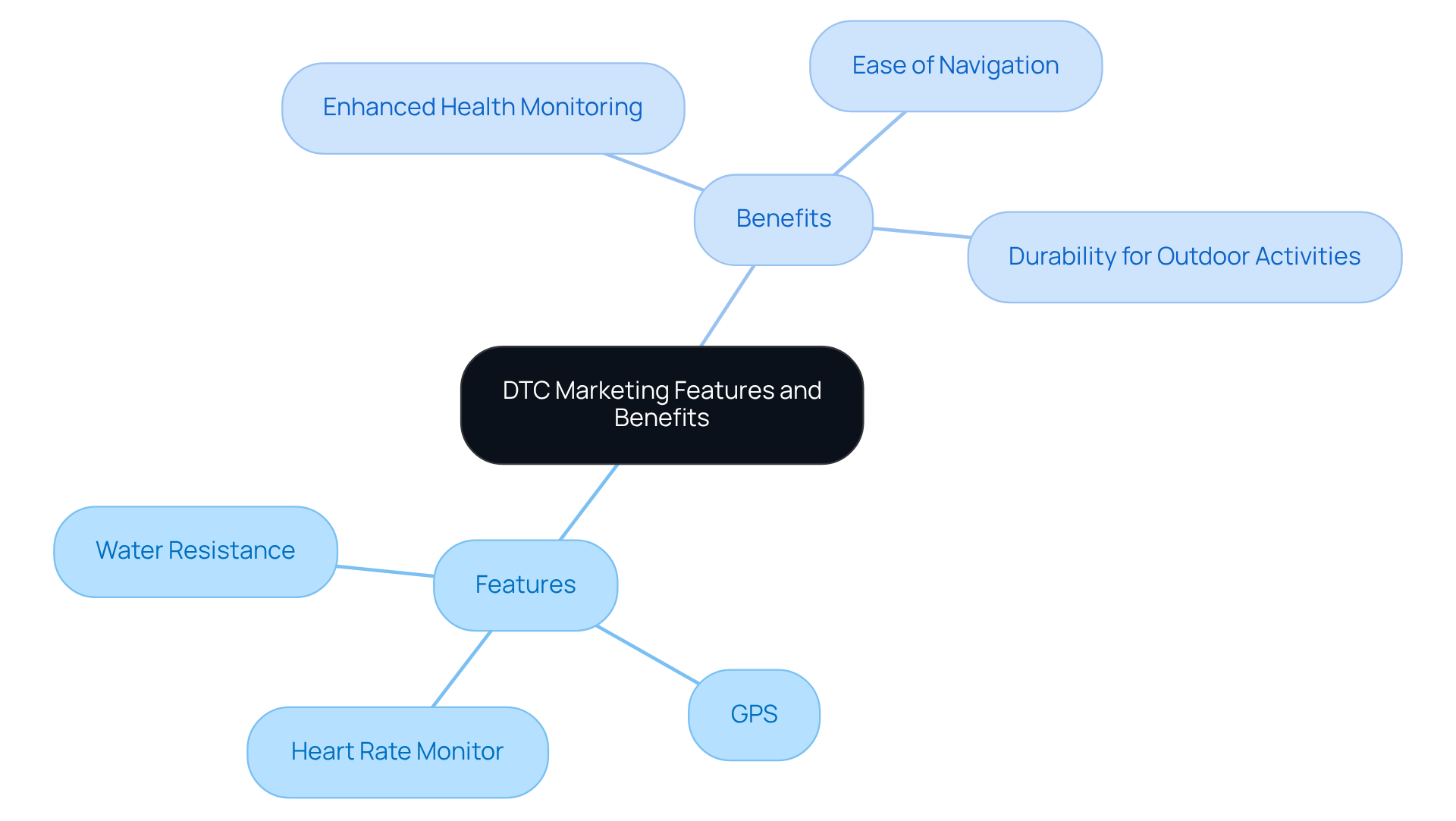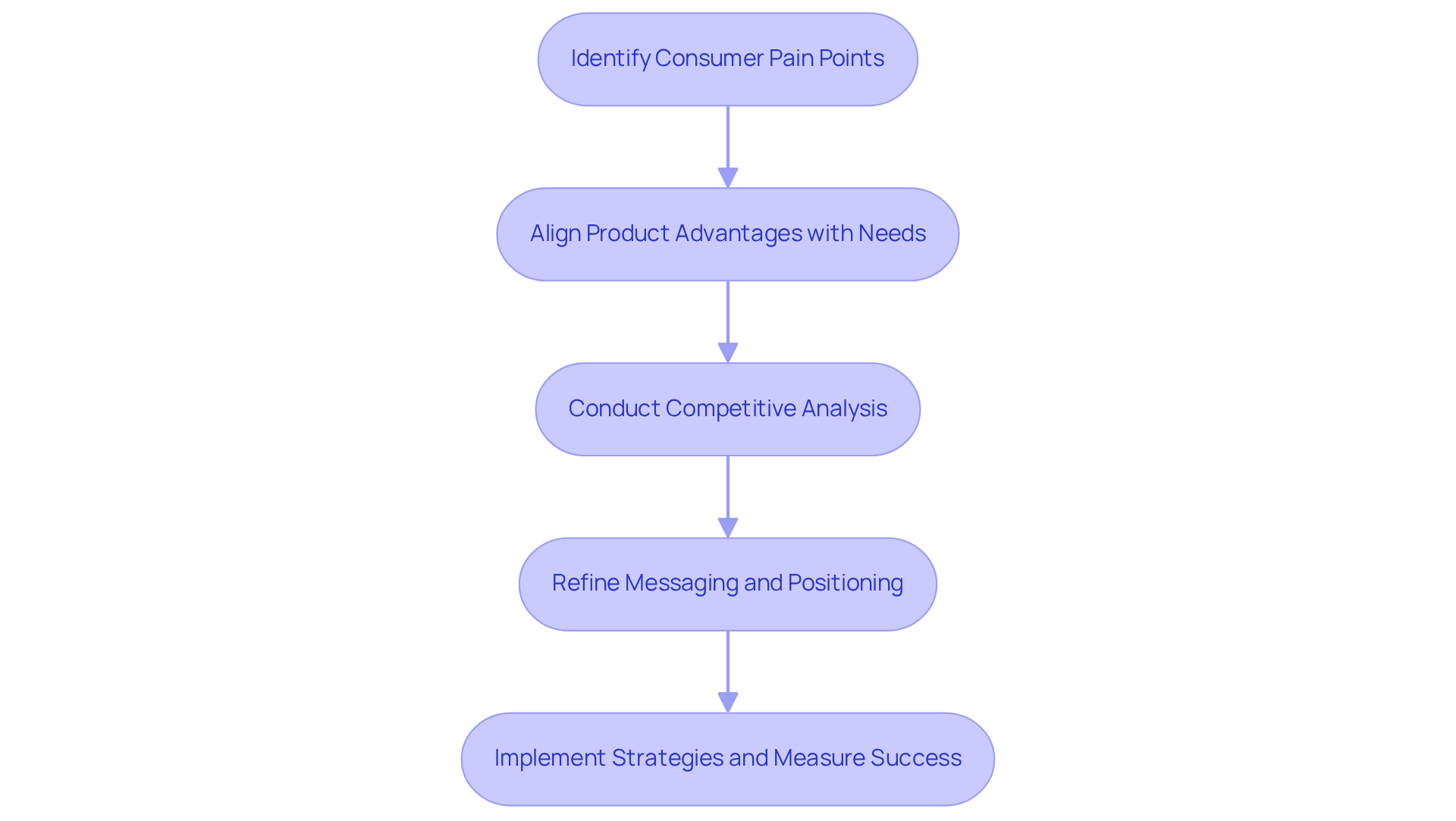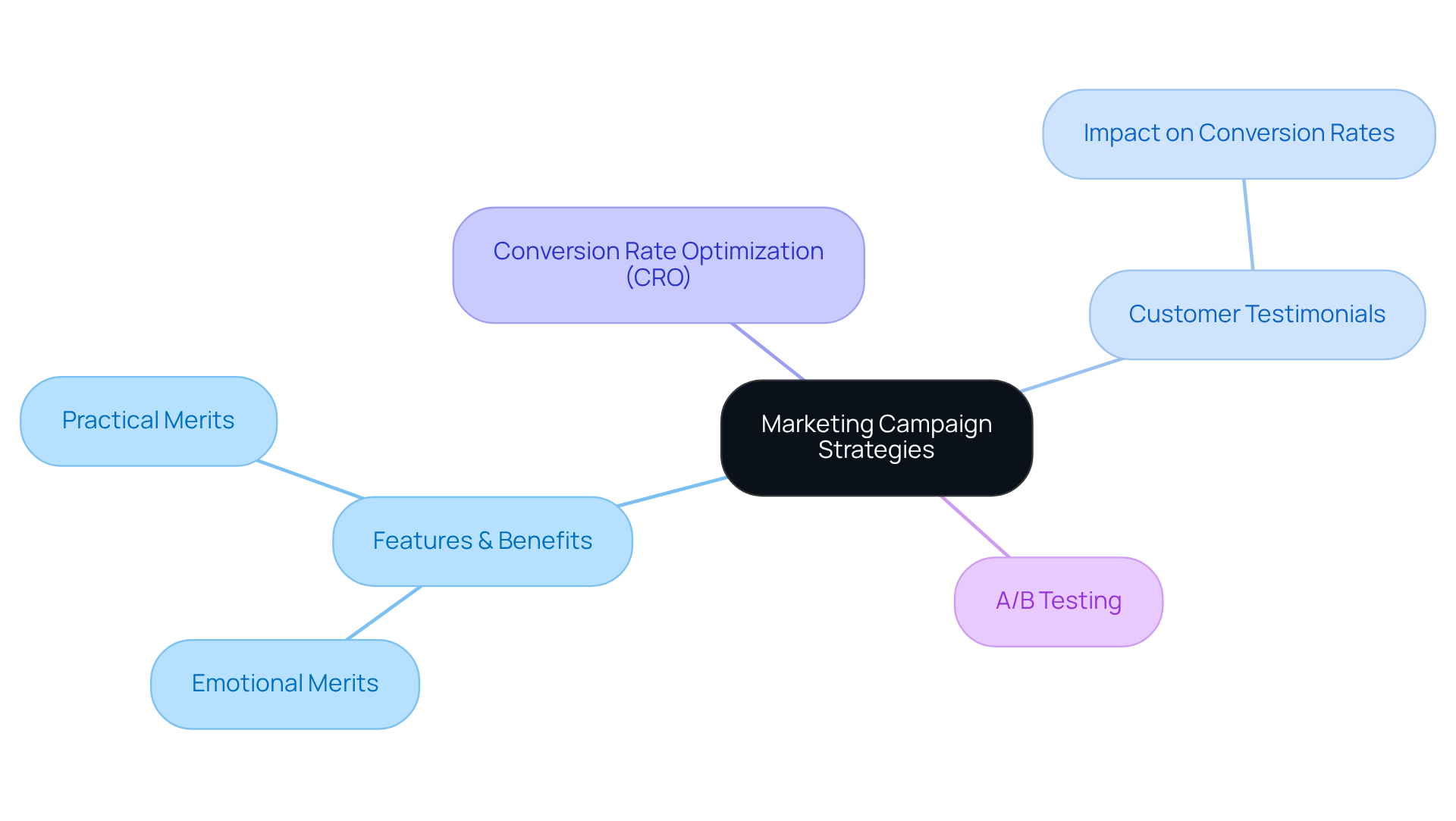
Overview
This article delves into the strategies that Direct-to-Consumer (DTC) brands can employ to maximize their success through the effective leveraging of product features and benefits. A profound understanding of these elements empowers companies to craft compelling narratives that resonate deeply with consumers. This resonance is crucial, as it ultimately drives conversions and fosters loyalty.
Successful case studies underscore this point, demonstrating significant revenue growth achieved through strategic positioning and targeted marketing efforts. By adopting these practices, DTC brands can not only enhance their market presence but also secure lasting relationships with their customers.
Introduction
In an increasingly competitive landscape, direct-to-consumer (DTC) brands must adeptly navigate the complexities of consumer expectations to distinguish themselves. Understanding the critical distinction between product features and benefits is essential; it empowers companies to craft compelling narratives that resonate deeply with their audience.
How can brands effectively leverage these elements to not only attract but also retain customers in a market saturated with options? This article explores strategies designed to maximize DTC success by aligning product attributes with consumer needs, ultimately driving engagement and conversions.
Define Features and Benefits in DTC Marketing
In the realm of , characteristics denote the specific attributes or functionalities of a product, such as size, color, or technology. For instance, a smartwatch may feature:
- A heart rate monitor
- GPS
- Water resistance
Conversely, benefits elucidate how these attributes translate into value for the consumer. In the case of the smartwatch, the advantages might include:
- Enhanced health monitoring
- Ease of navigation
- Durability for outdoor activities
By clearly delineating both characteristics and benefits features, companies can create compelling narratives that resonate with their target audience, ultimately driving conversions and fostering customer loyalty.

Utilize Features and Benefits for Effective Product Positioning
In the competitive DTC environment, successfully positioning a product requires companies to leverage their unique attributes and advantages to establish a compelling unique selling proposition (USP). This essential process begins with pinpointing the pain points of the target audience and aligning the product's advantages with those specific needs. For example, a skincare company might emphasize its use of natural components to promote healthier skin, appealing to consumers who prioritize clean beauty.
Furthermore, conducting a thorough competitive analysis is imperative. By comprehensively understanding how their benefits features stack up against competitors, companies can refine their messaging and positioning strategies. This approach not only enhances the visibility of the brand but also cultivates a deeper connection with customers, ultimately boosting loyalty and encouraging repeat purchases.
Successful DTC companies exemplify this strategic approach. For instance, Glossier has built a $1.2 billion brand by fostering an Instagram community that actively engages in product feedback, illustrating how user insights can shape effective USPs. Similarly, TOMS Shoes employs its one-for-one model, intertwining product sales with a narrative of social impact, which resonates deeply with consumers seeking alignment with their values.
The case studies from Parah Group further underscore the transformative power of effective positioning. A $30M apparel company optimized its homepage to showcase social proof and customer reviews, resulting in a remarkable 35% increase in conversion rates. This clearly demonstrates how can drive significant revenue growth. Another case involved a $15M cleaning product brand that boosted its average order value (AOV) by 80% through strategic bundling and pricing tests, highlighting the impact of tailored attributes on profitability.
In conclusion, a clearly articulated unique selling proposition that emphasizes benefits features and advantages in relation to consumer pain points is vital for DTC companies aiming to distinguish themselves in a saturated market and achieve sustainable growth. Addressing challenges such as high traffic but low conversion rates further underscores the necessity of a robust USP, as evidenced by the successful strategies implemented by Parah Group.

Implement Features and Benefits in Marketing Campaigns
To successfully incorporate benefits features and advantages in marketing initiatives, DTC brands must focus on narratives that convey both the emotional and practical merits of their products. For example, a campaign for a fitness app could showcase user testimonials demonstrating how specific functionalities—such as personalized workout plans and progress tracking—translate into tangible benefits like improved fitness levels and increased motivation. Research reveals that 95% of consumers consult customer reviews prior to making a purchase, highlighting the influential power of testimonials in shaping buying decisions.
Integrating comprehensive Conversion Rate Optimization (CRO) strategies can further elevate these marketing efforts. By leveraging Parah Group's expertise, companies can enhance profitability through rigorous testing and data-driven decisions that align with their marketing narratives. This holistic approach guarantees that all facets of the marketing strategy operate in harmony. Utilizing diverse marketing channels—such as social media, email marketing, and content marketing—can significantly broaden the reach of these narratives. Brands should also engage in A/B testing to explore various messaging strategies, identifying which combinations of attributes and advantages resonate most effectively with their audience. Notably, having 50 or more reviews per product can result in a 4.6% increase in conversion rates, underscoring the measurable impact of A/B testing on marketing effectiveness.
By consistently integrating benefits features into their campaigns, DTC brands can enhance audience comprehension and drive higher conversion rates. Successful case studies, such as those demonstrating an 18% uplift in sales attributed to customer reviews, underscore the tangible impact of this strategy. Furthermore, responding to customer reviews can bolster trust, as 45% of individuals are more likely to support businesses that engage with feedback. Ultimately, merging storytelling with user testimonials, coupled with a emphasizing rigorous testing and a holistic approach, not only cultivates trust but also fosters a deeper connection with consumers, paving the way for sustained growth.

Conclusion
Maximizing success in direct-to-consumer (DTC) marketing is fundamentally rooted in the effective leverage of a product's distinct features and benefits. By clearly articulating both the specific attributes of a product and the value they deliver to consumers, brands can craft compelling narratives that resonate with their target audience. This strategic approach not only establishes a unique selling proposition (USP) but also cultivates deeper connections with customers, ultimately driving conversions and enhancing brand loyalty.
Key insights have emerged throughout this discussion regarding the necessity of understanding consumer pain points and aligning product benefits with these needs. Successful DTC brands, such as Glossier and TOMS Shoes, exemplify how innovative positioning and community engagement can profoundly influence brand perception and sales. Additionally, case studies from the Parah Group underscore the transformative power of tailored marketing strategies, demonstrating how optimized messaging and customer engagement can yield substantial growth in conversion rates and average order values.
In a landscape characterized by fierce competition, the ability to effectively communicate product benefits is paramount. Brands are encouraged to implement robust marketing campaigns that integrate storytelling, user testimonials, and data-driven strategies to enhance audience understanding and trust. By prioritizing the alignment of features and benefits with consumer values, DTC companies can not only achieve immediate sales success but also pave the way for sustainable growth in the long term. Embracing these best practices will empower brands to distinguish themselves in a saturated market, ensuring they meet the evolving needs of their customers.
Frequently Asked Questions
What are features in DTC marketing?
Features in DTC marketing refer to the specific attributes or functionalities of a product, such as size, color, or technology.
Can you provide an example of product features?
An example of product features for a smartwatch includes a heart rate monitor, GPS, and water resistance.
What are benefits in DTC marketing?
Benefits in DTC marketing explain how the features of a product translate into value for the consumer.
How do benefits relate to the features of a smartwatch?
The benefits of a smartwatch might include enhanced health monitoring, ease of navigation, and durability for outdoor activities.
Why is it important to define both features and benefits in DTC marketing?
Clearly delineating both features and benefits allows companies to create compelling narratives that resonate with their target audience, driving conversions and fostering customer loyalty.
FAQs











